In this article
The domestic cat, a small feline and beloved pet, stands out in the animal kingdom due to its distinct dietary requirements. These creatures are known as "obligate carnivores," a term denoting that they must consume the flesh of other animals to survive. Their anatomical, physiological, and metabolic adaptations all contribute to this specific dietary niche.
**Unique Dietary Requirements**
Cats require certain nutrients that are available solely or primarily from animal sources:
1. **Taurine:** This indispensable amino acid is found only in animal tissue. Without it, cats can suffer from cardiac issues, blindness, and other health problems.
2. **Arginine:** This essential amino acid is a crucial component of a cat's diet. Even a single meal without sufficient arginine can lead to severe health complications.
3. **Arachidonic Acid:** This fatty acid, necessary for skin health and other functions, is derived from animal fat.
4. **Vitamin A:** Unlike some animals, cats can't convert plant-derived beta carotene into Vitamin A, needing a direct source from animal tissue.
5. **Vitamin D:** Cats can't synthesize enough Vitamin D via sun exposure, unlike humans. They must ingest it, with animal tissue being a prime source.
**Dependence on Protein**
Cats have a high requirement for dietary protein:
- They continue to use and excrete protein even when their diet is low in protein, indicating that they can't down-regulate protein digestion and utilization.
**Limited Carbohydrate Processing**
Cats also have a limited ability to process carbohydrates:
- They lack salivary amylase and have lower levels of other enzymes needed to break down complex carbohydrates, indicating a reduced adaptation for carbohydrate digestion.
**Digestion and Hormonal Regulation**
Cats' digestive systems are designed to process a diet high in protein and low in carbohydrates:
- They have a highly acidic stomach to break down proteins and kill potential pathogens found in raw meat.
- The transit time for food through a cat's digestive system is relatively short, usually less than 24 hours, which suits their high-protein, low-carb diet.
Cats also have unique hormonal regulation relating to feeding:
- The hormone ghrelin, which stimulates hunger, and leptin, which signals satiety, function differently in cats compared to many other animals. Ghrelin plays a prominent role in initiating feeding in cats, while leptin doesn't seem to suppress appetite to the same extent as in other species.
**Shorter Gastrointestinal Tract**
The length and complexity of an animal's gastrointestinal tract often correspond to its dietary habits. Cats, being carnivores, have a shorter GI tract that allows for rapid digestion and assimilation of nutrients from meat, which is easier to digest than plant matter.
The classification of cats as obligate carnivores results from a combination of their unique dietary requirements, dependence on protein, limited carbohydrate processing, specialized digestive system, and hormonal regulation. These factors underscore the importance of providing a diet that mirrors their natural prey-based nutritional needs, ensuring they receive essential nutrients available only in animal tissues. The cat's dietary preferences and physiological adaptations indeed speak volumes about their age-old lineage as adept hunters and carnivores in the wild.










